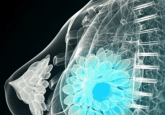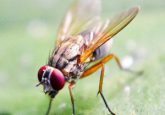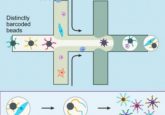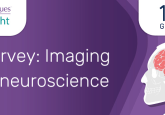New techniques and technologies for neuroscience – round-up from Society for Neuroscience 2018
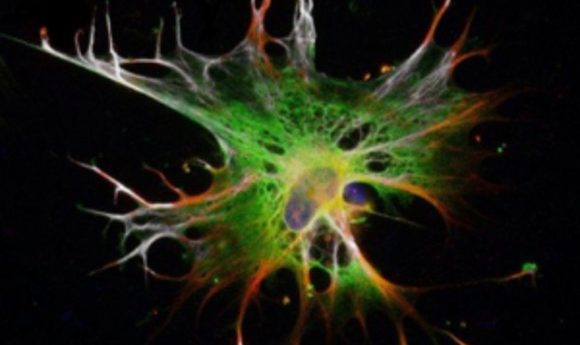
Did you miss the Society for Neuroscience 2018 meeting? Check out our Editor Francesca Lake’s highlights of the meeting.

A number of key themes were clear at this year’s Society for Neuroscience (SfN) meeting (3–7 November, San Diego, CA, USA). We clearly have the ability to generate a wealth of data with our current techniques and technology; however, tech to take those data and translate them into something usable is lagging behind. This year’s SfN saw a number of talks and presentations looking to solve this problem, as well as to make data gathering quicker, more reliable and more reproducible.
Another theme was non-invasive techniques – with an increasing focus on improving animal welfare and ongoing initiatives such as NC3Rs; it was great to see the amount of presentations and posters focusing on this.
I was delighted to be able to attend a number of fascinating presentations at this year’s SfN meeting, as well as view some exciting posters and interview some of the experts present. In this round-up I’ll provide my highlights of the latest in neuroscience biotechniques and biotech.
Reproducibility: high on the agenda
It’s no secret that validation is problematic. This was made clear in our conversation with Hanne Hoffmann (Michigan State University, MI, USA), whose team looks at the impact of seasonal changes and day length on circadian rhythm. She highlighted the impact that lack of technique validation can have on research downstream.
“I’ve had problems with techniques that were supposed to have been validated. Sometimes you get undesired behaviors, even in your controls, due to the impact of the technique on the cells’ function,” she commented. However, she was excited to see changes afoot at SfN. “It’s been exciting…to see the progress that’s being made and the tools that are being developed; we now have more than one way to approach neuronal networks, and that’s very exciting because we need to know the network function and not just one neuronal function,” she noted.
We spotted some interesting posters looking to improve reproducibility. One of our highlights was the poster by Shreejoy Tripathy et al. from the University of British Columbia (BC, Canada), who re-analyzed four path-seq datasets and demonstrated evidence of multi-cell contamination. They presented an approach to identify that contamination.
Working more closely and more quickly than ever before
I was delighted to speak with Tim Harris (Janelia Research Campus, VA, USA) about his work with Neuropixels, which are small micromachine silicon devices used to record neural signals with higher resolution and at a higher speed than previously possible.
With his physics background, Harris highlighted that biology is hard, perhaps harder than physics, because the field is always changing, and thus we need to embrace new technology. With the plethora of new tech presented at SfN, it’s great to see neuroscientists finding new ways to tackle ever-changing problems, and taking lessons from other fields such as physics.
One example of the new tech available to neuroscientists came from ZEISS (Oberkochen, Germany), who were demonstrating their new workflow, in collaboration with Inscopix (CA, USA), to link images of the brain from all levels. This enables the connection of structure with behavioral imaging and also allows the use of fluorescent labels and other imaging modalities for context. While the marriage of imaging modalities is important to provide new insights into brain function, ZEISS’ tech also allows researchers to easily (and quite beautifully) show their collaborators the context for each image. With cross-field collaborations integral to research success, yet meaning that researchers are increasingly involved in new fields, this seems like a good step for new technology. Inscopix themselves presented more new tech, which is akin to having “a mouse with GoPro on its head,” that aims to map brain activity in a more versatile way than current technologies.
Collaboration through sharing was also on the agenda, with several open source/access resources presented. One came from ZEISS, who have developed a digital platform, APEER, for processing microscopy, enabling collaboration and sharing in the cloud. Another came from the lab of Kwanghun Chung (MIT, MA, USA), who presented on various techniques using stochastic electrotransport to observe the brain at a sub-cellular resolution, without causing damage. With various methods coming soon, it’s worth keeping an eye on his team. More open source tech was provided by Bruce Rheaume et al. at the University of Connecticut (CT, USA). Their poster presented RNA-seq to identify subtypes of retinal ganglion cells, and they have built a web app for comparing retinal ganglion cell gene expression.
Collaboration through outsourcing is also on the rise, with the increasing throughput of research and the need to ensure reproducibility meaning it can be easier to bring in experts on one particular topic than to pay for machines and training to conduct that research in your own lab. Many of the exhibitors at SfN were providing resources to ensure reliable, high-throughput data generation.
We spoke to the CEO of one such exhibitor, Cellectricon’s Mattias Karlsson, about his company, which has launched a new platform using microfluidics for neurodegenerative discovery research.
“Our aim is to utilize the collective knowledge and learnings and capabilities that we have established from our work in other disease areas and implement that into…neurodegeneration,” he explained.
Drug discovery was, perhaps unexpectedly, a large part of the agenda. Functional ultrasound caught my attention as an interesting method to measure brain response to drugs that could overcome some of the problems inherent with current tech, such as the difficulty in studying larger animals. Indeed, a proof-of-concept in non-human primates was discussed by Caltech’s Sumner Norman et al.
Non-invasive approaches to animal models
One of the much-talked about sessions at SfN was the brain and music session. We spoke to Elaine Bearer (University of New Mexico, NM, USA) about this. A composer and neuroscientist herself, she was excited to see the neuroscience community paying attention to that relationship, and looking for new tech to help us understand it.
“…you want to know how music can shape or influence the brain,” she commented. “There are kinds of techniques we could use for that; infra-red, focused ultrasound, transcranial magnetic stimulation approaches and so on.”
Bearer chaired a session on techniques to image the brain non-invasively, a particularly interesting topic given the push for more humane ways of conducting animal research. Bearer’s own team uses manganese-enhanced MRI (MEMRI) to map neural circuits, which they have done in Alzheimer’s disease and PTSD.
“For the first time, we’re showing the progression of an acute fear event to a post-traumatic stress brain activity, correlating the brain with behavior, and it’s very exciting,” explained Bearer.
Other techniques discussed in that session included ‘sonopharmacology’, a brand new phrase coined by Jeffrey Wang and his team (Stanford University, MA, USA), where ultrasonic drug uncaging was used to map brain response, and a novel light-sheet microscope that had been optimized to rapidly record calcium dynamics in a large population of neurons (Cody Greer et al., Washington University in St Louis, MO, USA).
The non-invasive aspect also excited Jit Muthuswamy (Arizona State University, AZ, USA), who led another symposium focusing on non-invasive techniques. His team is improving on techniques such as transcranial magnetic stimulation (TMS), producing minimally invasive techniques to stimulate neurons using sound, and developing plug-and-play devices to record membrane potentials in awake and non-head-fixed animals.
“One problem with the current neural interface techniques is that they are highly invasive and often result in disturbing, if not rupturing, a lot of microscale vasculature possibly causing microscale strokes. When using neural interfaces you are aiming to make discoveries and assess function of specific circuitry so this violates the fundamental principle of instrumentation; don’t disturb what you’re trying to measure,” he explained.
TMS and ultrasound were discussed in various sessions, with talks by researchers looking to better understand their mechanisms and improve on their selectivity. One of our favorite quotes was from a session by Simon Davis (Duke University, NC, USA), looking at the effect of stimulation at a single site on the whole brain: “Brains aren’t a collection of independent processors and we should stop treating them as such,” he noted.
